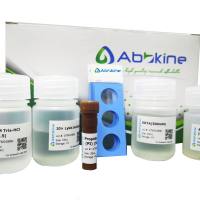Electrochemical Detection of 8-Hydroxy-2-Deoxyguanosine Levels in Cellular DNA
互联网
互联网
相关产品推荐

(2-acetyloxy-3-hydroxy-propyl) acetate;B73781-25mg
¥5000

彗星法DNA损伤分析试剂盒(3孔载玻片)
¥1498

CSE1L/CSE1L蛋白Recombinant Human Exportin-2 (CSE1L)重组蛋白Cellular apoptosis susceptibility protein Chromosome segregation 1-like protein Importin-alpha re-exporter蛋白
¥5268

γ-氨基丁酸试剂盒,用于样本中GABA含量检测,微量法,GABA Content Detection Kit
¥358

Enmein, 13-deoxy-19-hydroxy-, (19R)-;B29537-10mg
¥1800
相关问答
推荐阅读
Bioassay of 2-Deoxyguanosine/8-Hydroxy-2-Deoxyguanosine by HPLC With Electrochemical/Photodiode Array Detection
Detection of Low Levels of Nitric Oxide Using an Electrochemical Sensor
Measurement of 8-Oxo-deoxyguanosine in Lymphocytes, Cultured Cells, and Tissue Samples by HPLC with Electrochemical Detection

